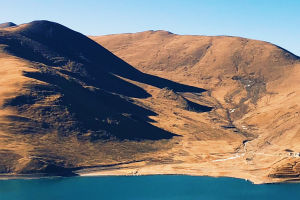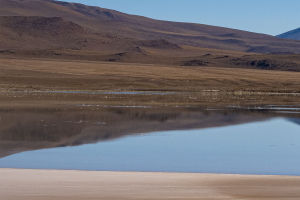Lake Karakul located on the roof of the world, at an altitude of 4,000 meters above sea level, Lake Karakul is often described as the Central Asian equivalent of the "Dead Sea" in the Middle East. Despite its challenging location, tourists flock to the lake for a unique cruising experience.
Situated in the High Pamir mountain range in Tajikistan, Lake Karakul is located at an even higher altitude than the legendary Lake Titicaca in South America. The lake boasts a huge body of water covering an area of about 380 square kilometers and a depth of 230 meters.
It was formed about 25 million years ago when a meteorite hit the Earth. Surrounded by snow-capped mountains, Lake Karakul exudes a stunning moon-like beauty.
To reach Lake Karakul, visitors embark on one of the world's most epic road trips via the Pamir Highway. Formerly named Lake Victoria by British cartographers, the lake was later renamed Kara Kul or Black Lake. The color of the water changes throughout the day, shifting from shades of turquoise and emerald to deep ruby blue.
Lake Karakul is a perfect destination for adventurous travelers crossing Central Asia, with the nearest towns being Murghab in Tajikistan or Osh in Kyrgyzstan. Surrounded by salt deposits and with no outflow, the lake is one of the saltiest in Asia.
Its high salt content makes it impossible for any marine life to survive except for the stone loach, a freshwater fish that can live in sand-bottomed lakes. Boats can only float shallowly on the surface, and navigating them is challenging as they easily capsize.
Despite these challenges, Lake Karakul has become a popular destination for visitors seeking unique experiences. In fact, it is now known as the "Roof of the World Regatta," and every summer enthusiasts from all over the world participate in a quirky festival that includes kitesurfing, jet skiing, and inflatable rafting.
The only inhabitants of the region are a few hardy Kyrgyz who live in a small village called "Karakul" on the shores of the lake. They provide a temporary place to stay for tourists who come from the Pamir Highway seeking adventure.
The village's white and light blue houses, set against a surreal morning light, evoke the architecture of a Greek island. However, the entire village feels like a ghost town, with few residents venturing outside due to the scorching summer sun or the high altitude that makes the rest of the year cold.
The endless mountains surrounding the lake keep the moist air tightly out, making it one of the driest places in all of Central Asia, with less than 30 mm of rainfall per year. Despite the sparse population and challenging terrain, Lake Karakul's recent designation as part of Tajik National Park ensures that it will remain on the bucket list of adventurous travelers for years to come.


